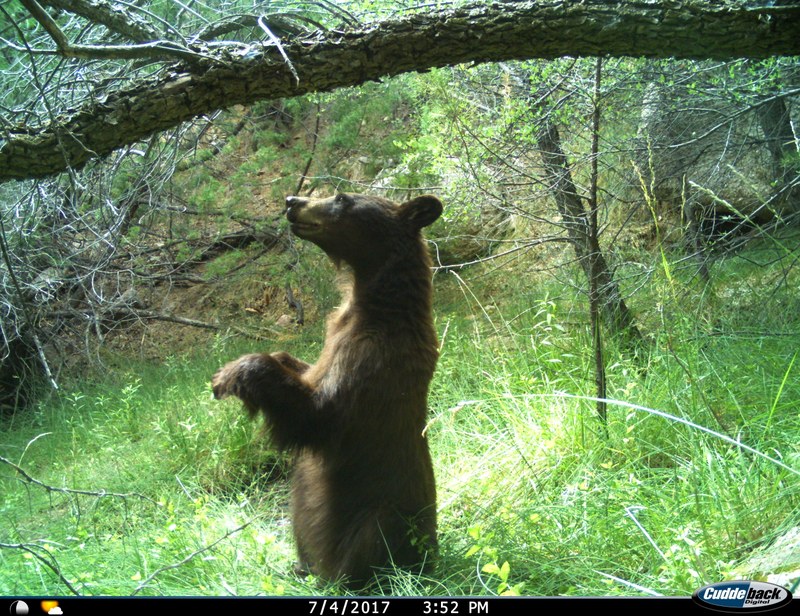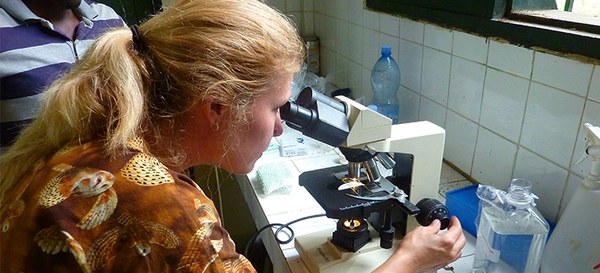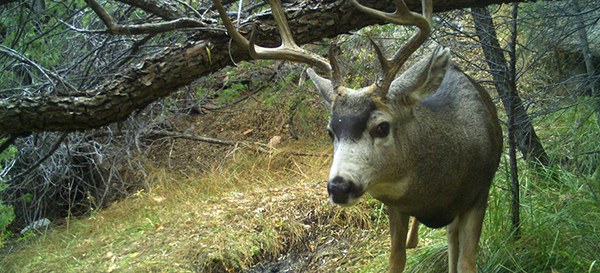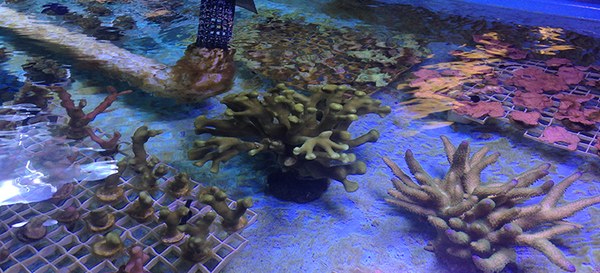
Scientific Research at the ABQ BioPark
Zoos and aquariums are becoming increasingly important contributors to scientific knowledge about species and the ABQ BioPark is no exception.
May 30, 2018 - Many visitors think of the ABQ BioPark as a place to view and learn about plants and animals. But behind the scenes, staff members are working hard to help conserve species by contributing scientific information to the global knowledgebase.
Over the years, staff have contributed research on a variety of species including Rio Grande silvery minnows, West African slender-snouted crocodiles, great apes, polar bears, Tasmanian devils, elephants and more.

Here are details on just a few of the current projects that ABQ BioPark staff members are leading:
- The ABQ BioPark has partnered with a zoo in the Ivory Coast since 2014 to help with the care and breeding of the West African slender snouted crocodile, one of the most endangered crocodiles in the world and also one of the least known. Through the ABQ BioPark’s work in the Ivory Coast, herpetology and veterinary staff have contributed to the worldwide knowledge base for this species. The global database for this species now has baseline numbers for things like healthy calcium levels.
- The Aquarium is also working on several projects including documenting what it takes to successfully propagate coral. The Aquarium has an active coral propagation program. Coral reefs across the world’s oceans are endangered, including the Great Barrier Reef, which has experienced a 50 percent decline in coral cover over the last 27 years. Spreading knowledge on coral propagation techniques is crucial in helping aquariums become more self-sufficient, avoiding the need to collect coral from the wild. Coral propagation is also another way to help restore wild coral reefs.
- “The Oso Project,” led by ABQ BioPark Zookeeper Dylan Frentzel, has been compiling information about wildlife corridors in the Sandia Mountains since January 2016. Camera traps have been strategically placed to gather data about how black bears use urban, wild land, and interface lands. Incidental data has been collected on avian and mammal species diversity. ABQ BioPark staff and local citizen scientists have gathered data under the guidance of the Sandia Mountain Bear Collaborative. The data could be used to help inform local wildlife and planning agencies about animal migration patterns, locations and numbers of certain species, and more.
- The BioPark has also contributed knowledge about breeding for a number of species. Aquarium staff members hope to continue this trend by contributing knowledge about the breeding requirements for weedy sea dragons.
-
Two of the ABQ BioPark’s herpetology team members are taking a lead role in creating a document called "Conservation Priorities for World Crocodilians” for the IUCN’s Crocodile Specialist Group (CSG). Matt Eschenbrenner, supervisor of herpetology and member of the ABQ BioPark’s research committee, and Katie Anderson, senior reptile keeper, will be compiling information to help guide the community on the conservation needs and actions to be taken to help conserve crocodilian species.
In addition to all these activities, the ABQ BioPark also coordinates local events for nationwide citizen science campaigns like The Great Backyard Bird Count and Frog Watch. These citizen science events empower everyday citizens to compile data about bird and frog species local to their area.
How an Idea is Born

ABQ BioPark staff members are free to suggest ideas to the facility’s research committee. The committee assists by offering guidance and suggestions, along with financial support, if needed (which is provided by the New Mexico BioPark Society).
Any research involving one of the ABQ BioPark’s animals must go through the facility’s animal welfare and science advancement committee. This type of research must meet specific criteria: it must not negatively impact the welfare of the animal; it must have scientific value and credibility; it must be worth staff time; and it must be feasible.
Non-invasive scientific research at zoos and aquariums helps transform animals from being educational ambassadors to true advocates for their species. “Most of them will never be in the wild, but they serve a crucial role to help their wild counterparts survive,” said Carol Bradford, ABQ BioPark lead veterinarian and current research committee chair.
Evolution of Zoos and Aquariums

According to a new study, zoos and aquariums play a growing and crucial role in contributing knowledge about scientific topics including biodiversity.
"Zoos and aquariums are definitely players in scientific research," said researcher Eric Larson, a freshwater ecologist in the Department of Natural Resources and Environmental Sciences at the University of Illinois.
The study determined that researchers at zoos and aquariums have contributed at least 5,175 peer-reviewed articles to conservation, zoology and veterinary journals over the past 20 years.
“It’s the evolution of a zoo,” Eschenbrenner said. “It’s where we’re all headed and need to go. Zoos and aquariums can make a difference.”
Bradford noted that while many universities and laboratories do research, they do not necessarily have the conservation mission of zoos and aquariums. Also, many research projects at universities and laboratories may be funded by donors and the research topics may be driven by that donor’s interests.
“I think it’s kind of left up to us to pick up the reins and find the answers to some global conservation problems,” Bradford said. “If we don’t, who will?”

